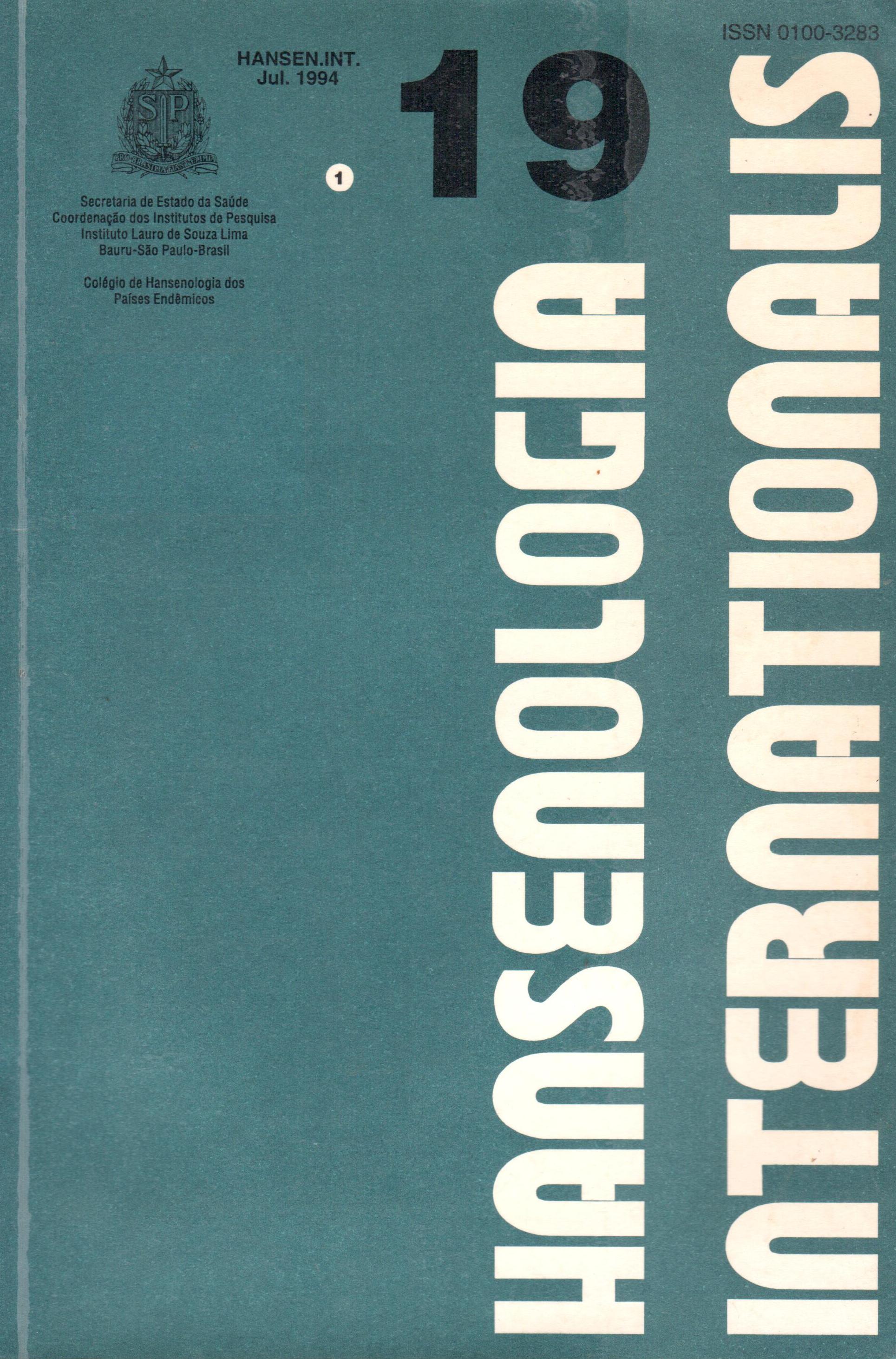Resumo
Cultivation trials for Mycobacterium leprae resulted in growth of Mycobacterium psychrophilum (L). Media were inoculated with host grown Mycobacterium leprae cells from armadillo tissues, Nu mice foot pads or human lepromata. Cultures were obtained in liquid and on semisolid multifactoria I media containing water soluble palmitic acid or its salts. Ammonium thioglycolate and Na palmitate served as carbon and energy sources. The watersoluble palmitic acid remained in perfect solution following sterilization in the autoclave, thus easily accessible to the cells. The cyclodextrin-Fe complex served asa siderophore to grow the obtained leprosy derived psychrophilic cells. The leprosy derived cultures and subcultures grew optimally at 4-10°C, but deteriorated rapidly at +32°C in the multifactorial media. No growth occurred in 7H9 media. Cultures were not identified for classification. Note: Water soluble palmitic acid culture media are available from this author free of charge for qualified investigators.
Referências
2. BAR, R. Cyclodextrin-aided bloconversion and fermentations. Trends BiotechnoL, 7: 2-4, 1989.
3. BARCLAY, R. ; WHEELLER, P.R. Metabolism of mycobacteria in tissues. In The Biology of Mycobacteria London Acad. Press, 3: 37106,1989.
4. BINFORD, C.H. Comprehensive program for inoculation of human leprosy into laboratory animals. Public Health Rep., 71: 955-956, 1956.
5. BRAND, P. Association between damage from leprosy and temperature. Int. J. Lepr., 26: 423-424, 1958.
6. FRANZBLAU, S.G. Oxidation of palmitic acid by Mycobacterium leprae in an axenic medium. J. Clin. MicrobioL, 26: 18-21, 1988.
7. FRANZBLAU, S.G.; HARRIS, E. Biophysical optima for metabolism of M. leprae. J. Clin. Microbiol. , 16: 1124-1129, 1988.
8. ISHAQUE,M., KATO, L., SKINSNES, O.K. Cytochrome linked respiration in host grown M. leprae isolated from an armadillo. Int. J. Lepr., 45: 114-119, 1977.
9. ISHAQUE, M., KATO, L. Oxidation of substrates by host grown Mycobacterium leprae and Mycobacterium lepraemurium and by in vitro grown mycobacteria cultured from human, armadillo and murine lepromas. Int. J. Lepr., 45: 120-131, 1977.
10. ISHAQUE, M. Direct evidence for the oxidation of palmitic acid by host grown Mycobacterium leprae. Res. Microbiol., 140: 83-93, 1989.
11. KATO, L. Absence of mycobactin in Mycobacterium leprae; probably a microbe dependent microorganism. Implications. Ind. J. Lepr., 57: 58-70, 1985.
12. KATO, L. Investigations into the cultivation of M. leprae. A multifactorial approach. Lepr. Rev., 57 Suppl. 3. 209-219, 1986.
13. KATO, L. Psychrophilic mycobacteria in M. Ieprae infected tissues. Int. J. Lepr., 56: 631- 632, 1988.
14. KATO, L. Leprosy associated mycobacteria: implications. Acta Lepr., 7: 1-6, 1989.
15. KATO, L., SZEJTLI, J., SZENTE, L. Water soluble fatty acid. To be published.
16. LEVY, L. Studies in the mouse footpad technique for cultivation of M. leprae. 3. Doubling time during logarithmic multiplication. Leprosy Rev., 47: 103-106, 1976.
17. LING, C.C., et al. a-cyclodextrin siderophores. Conference on Supramolecular Chemistry. SaarbrÚcken., Sept. 2-5. P. 39, 1988.
18. PATTERSON, R.A., THOMPSON, T.L., LARSEN, D.H. The use of Zephiran in the isolation of M. tuberculosis. Amer. Rev. Tuberc., 74:
284-288, 1956.
19. SZEJTLI, J. The cyclodextrins and their applications in biotechnology. Carbohydrate polymers., 12: 375- 392, 1990.
20. WHEELER, P.R., RATLEDGE, C. Use of carbon sources for lipid biosynthesis in M. leprae: a comparison with other pathogenic
mycobacteria. J. Gen. Microbiol.,133: 21112112, 1988.
21. WHEELER, P.R., BULMER, K., RATLEDGE, C. Enzymes for biosynthesis de novo and elongation of fatty acids in myco-bacteria grown in host cells: is Mycobacterium leprae competent In fatty acid biosynthesis? J. Gen. MicrobioL, 36: 211-217, 1990.

Este trabalho está licenciado sob uma licença Creative Commons Attribution 4.0 International License.
